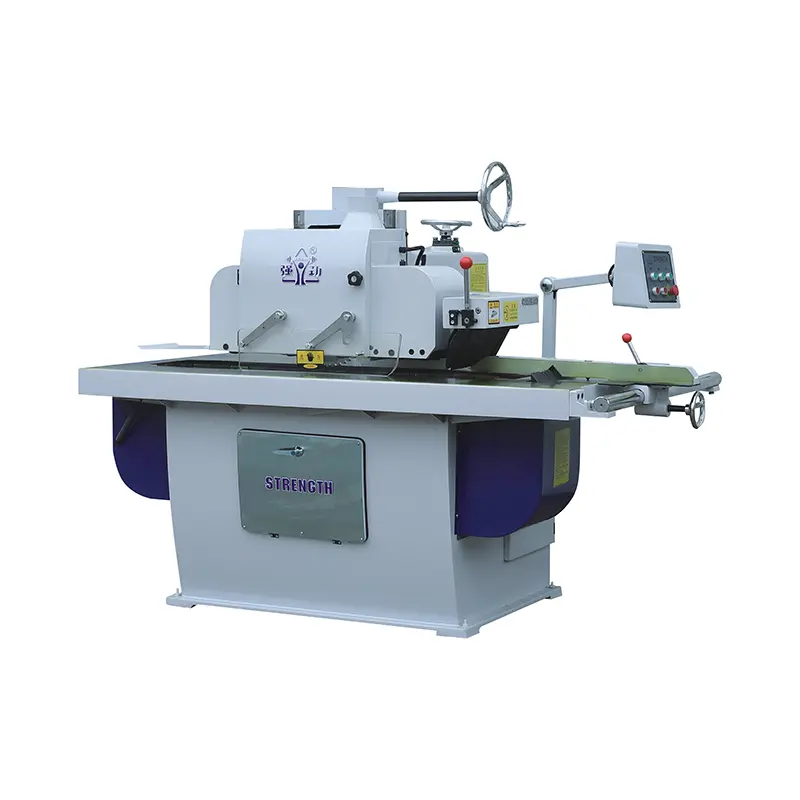Hardwood processing: Choose the right planer
introduction
In the field of wood processing, hardwood is widely used in the production of high-end furniture, floors, musical instruments, carvings and other products due to its hard texture, beautiful texture and strong durability. However, the processing of hardwood is relatively difficult, and it is necessary to choose the right tools and processes to achieve the ideal processing effect. As one of the indispensable tools in wood processing, planers play a crucial role in the processing of hardwood. This article will explore in-depth the different types of planers in hardwood processing and their characteristics, and help international wholesale buyers choose the most suitable planers for hardwood processing.
Characteristics and processing requirements of hardwood
Hardwood usually refers to wood with high wood density and hard texture, such as oak, walnut, cherry, maple, rosewood, etc. They have the following characteristics:
High density: Hardwoods usually have density between 0.65-1.2 g/cm3, which makes them require greater cutting force when machining.
Complex texture: Hardwood has diverse textures, some are straight, some are oblique, and some are wavy. This may lead to problems such as tearing and burrs during processing.
High hardness: The hardwood has higher hardness and higher requirements for the wear resistance and sharpness of the planer.
Flat planer
Flat planers are one of the most common types of planers in wood processing. They are mainly used to plan and straighten the surface of the wood to remove uneven parts of the wood surface. According to the length of the planer, flat planer can be divided into several types: waste planer, long planer, large planer and clean planer.
Waste plan: The length is 200-250 mm, mainly used to plan the rough surface of wood. It is suitable for initial processing of hardwood, removing burrs and larger uneven parts of the wood surface.
Long planing: The length is 450-500 mm, and the surface of the planed wood is relatively straight. Long planing is suitable for fine processing of hardwood and can ensure the flatness of the wood surface.
Large flat planing: the length is about 600 mm, mainly used for planing and seaming processing of square materials. It is suitable for processing large hardwood parts such as furniture frames, tabletops, etc.
Clean planing: length is 150-180 mm, used for fine planing of wood products at the end. The clean planing can plan the hardwood surface very smoothly and achieve high processing accuracy.
Slot planer
Groove planers are mainly used to plan grooves on the surface of wood. It is divided into two types: fixed groove planing and universal groove planing. The fixed groove planer is fixed on the planer and can only plan grooves of fixed widths; while the universal groove planer can replace planers of different widths to meet the needs of groove processing of different widths. In hardwood processing, groove planers are often used to make mortise and tenon structures, inlay decoration, etc. of furniture.
Wire planer
Wire planers are mainly used to process decorative lines on wood surfaces. It is divided into single-wire planing and miscellaneous planing. The single-line planer is flat and narrow, with the blade edge 2 mm wider than the planer belly, and the width of the planer should not exceed 20 mm. It can be used to widen the sides and bottom surfaces of the groove, clean the wire pins of the groove, or to make grooves, cut openings and wires separately. Miscellaneous wire planing is mainly used in decoration, such as decoration lines for doors and windows, furniture and other wood products. In hardwood processing, wire planers can add beautiful decorative effects to the product.
Iron planer
Iron planer is also called shaft planer or chubic planer. It has a short planer and a cover knife are bolted to the planer. It is suitable for planing curved parts of small wood. Iron planer has several types such as flat bottom, round bottom and double arc circle. Flat bottom planing is used to plan outer arcs; round bottom planing is used to plan inner arcs; double arc round bottom planing is used to plan double arc wood. In hardwood processing, iron planers can be used to process some complex-shaped hardwood components, such as the legs of furniture, handrails, etc.
Hardwood planer
Hardwood planer is a planer specially designed for hardwood processing. It is usually equipped with larger blades and handles, which facilitates the use of greater force for planing. The advantage of hardwood planers is that they can quickly remove large amounts of wood chips from the hardwood surface and reduce the time required for rough processing. At the same time, it can also be used to adjust the size of hardwood to meet specific standards or design requirements. The cutting edge angle of hardwood planers is usually steep, generally between 50°-55°, which allows it to better cope with the high hardness of the wood when slabing hardwood.
Key points for choosing a planer
Choose according to the type of hardwood
Different types of hardwood have different hardness and texture characteristics. For example, oak has a higher hardness and a straight and uniform texture; while walnut has a slightly lower hardness and a more complex texture. Therefore, when selecting a planer, it is necessary to determine according to the type of hardwood being processed
Post time: Jul-09-2025

